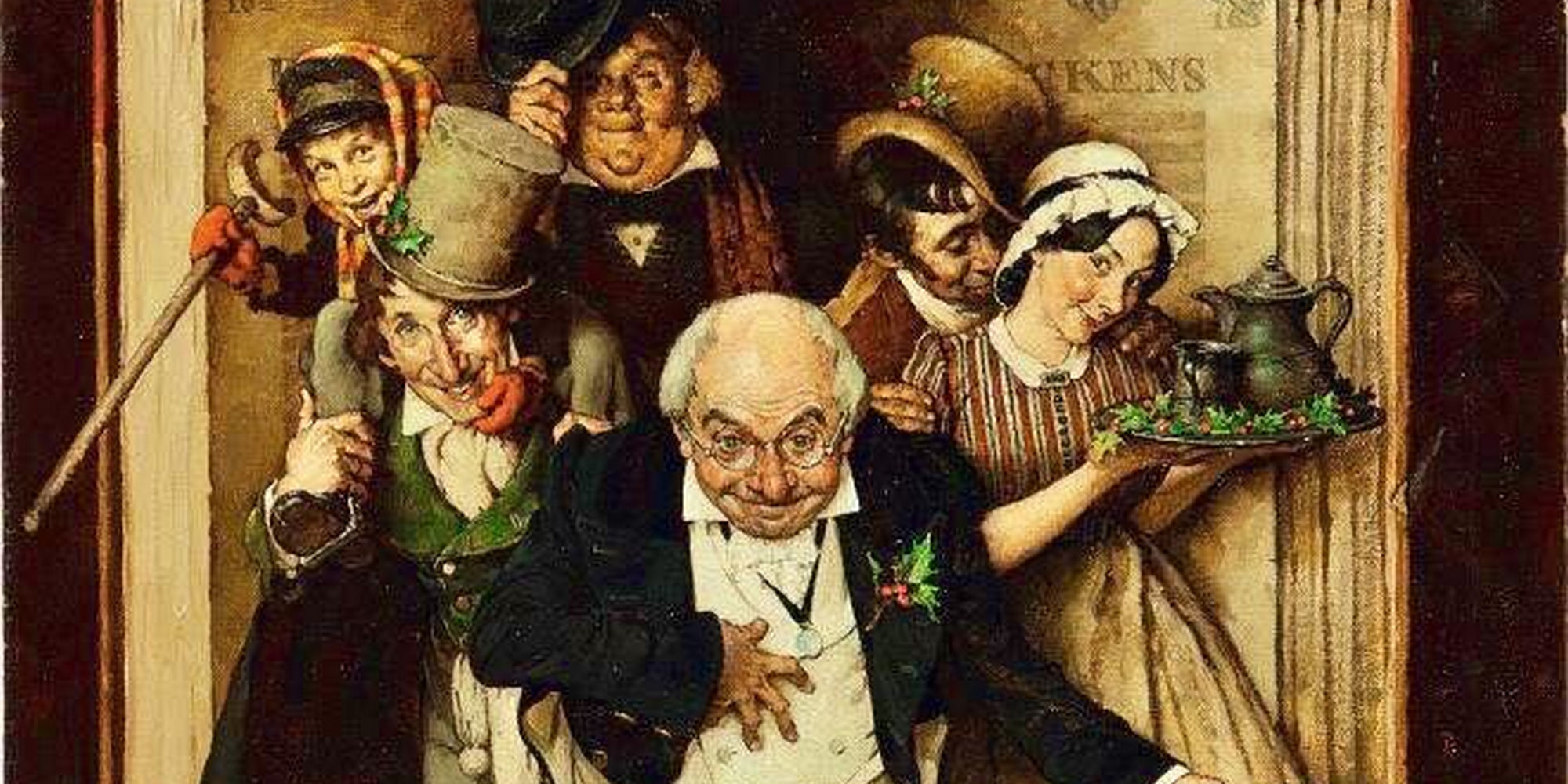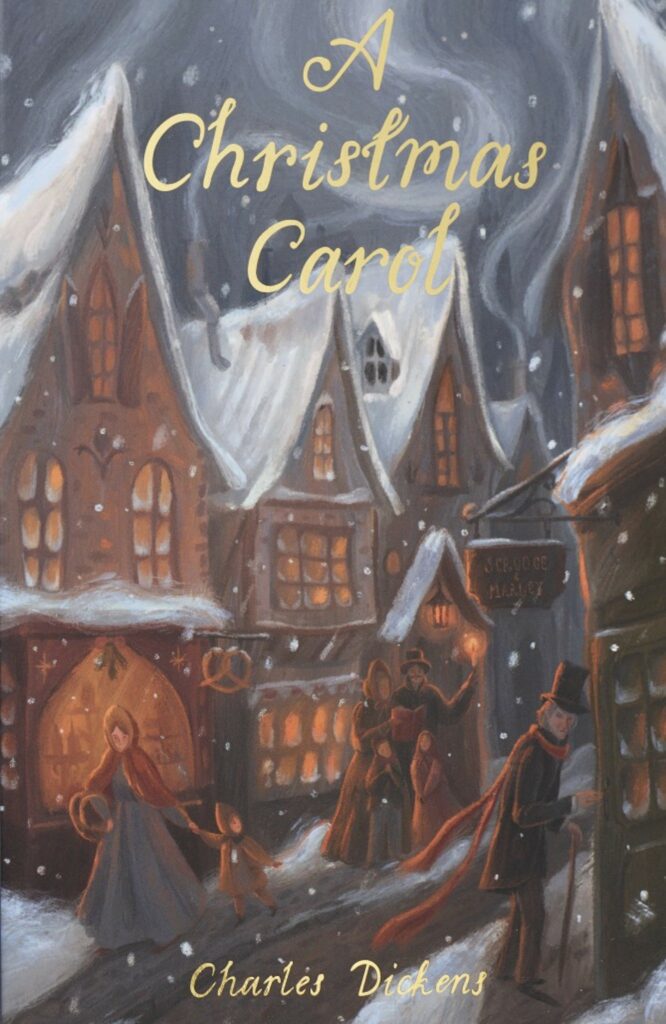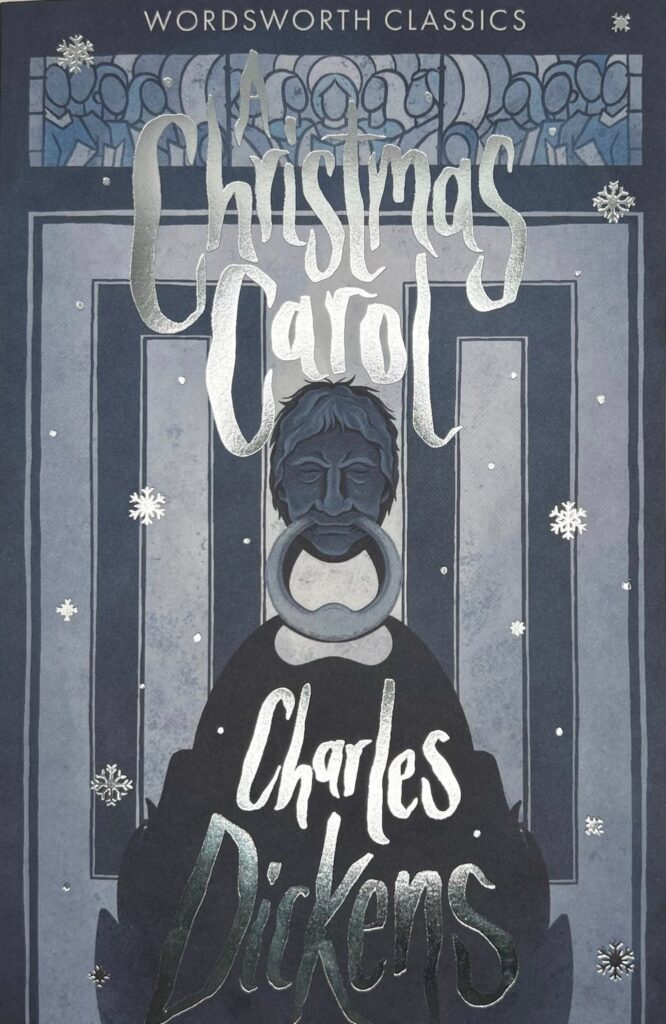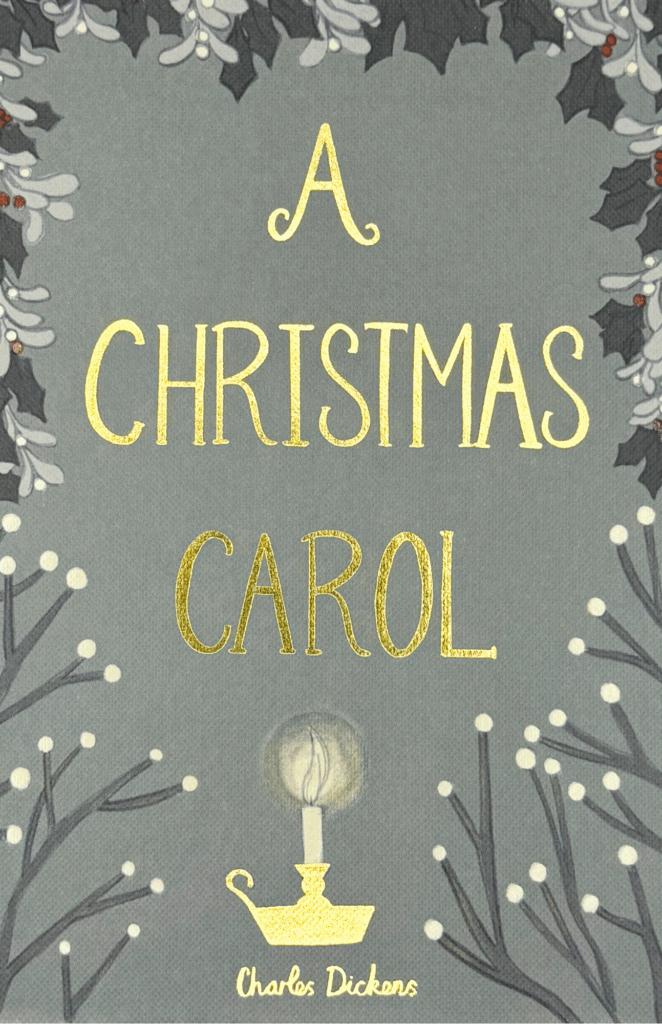
Peter Lancaster on the many faces of Scrooge
God Bless Us, Most of Us. Parker Lancaster looks at the many faces of Scrooge through the years.
Well, friends. It’s Christmas. Again. Yaaay. Once again, we celebrate this, the most wonderful time of the year, with deadly Walmart, flash sale stampedes to the soundtrack of Wham!’s “Last Christmas” set on repeat. Once again, we dance beneath the mistletoe to soul-soothing covers of the classics and heartwarming original tunes of holiday joy by such crooners as Nat King Cole, Bing Crosby, Patti LaBelle, Michael Bublé, Bob Goulet, Wild Man Fischer, and of course, the inimitable Eric Idle. It’s Christmastime in the city (and in the country, too, I suppose), and children are laughing, and people are passing, meeting smile after smile, and on every street corner, you hear silver bells. But it doesn’t stop there. Oh, no.
Everywhere you go, you’re treated to an aural onslaught, a sadistically violent assault on your delicate eardrums, with the incessant, relentless and maddening RINGA-DINGA-LINGA-CHINGA-RINGA-LINGA-SHINGA-DINGA-RINGA-RINGA! of the deafening handbells furiously swung by the dreadful army of panhandling Salvation Army Santas permanently camped outside of every department store, gas station, residence, warehouse, farmhouse, henhouse, outhouse, cathouse, and doghouse in America. Even at your Christmas dinner table, for some reason, someone let one of them in. They’ve breached the castle walls. While you’re delicately nibbling your nana’s spice cake and ham, the Salvation Army Guy (whose name is most likely Greg) is asking for spare change while thunderously banging his little bell in your face until the concussive shockwaves of sound cause spinal fluid to leak out of your ears and you begin to suffer from short term memory loss and blurred vision. Even when you turn the shower on and pull back the curtain, Greg is there, soaking wet in full Santa attire, staring into your soul with a haunted thousand-yard stare, smashing that bell until the mirror cracks. The Gregs of the world, dedicated and professional Santas that they are, will never eat. They will never sleep. And they will never stop. Ring-a-ling. Hear them ring.
And so it is that we find ourselves lucky enough to be in that time of year again for forced merriment, massive credit card debt and payday loans to afford another haul of presents, drunk relatives aspersing your political affiliation over dinner, and, of course, an obligatory annual reading of Charles Dickens’s classic novella, A Christmas Carol. I suppose that being flooded with so much stomach-churning Christmas cheer from all sides might actually make one’s Christmas somewhat merry, even if only by accident. So bring on the book and the eggnog, I say. Carol is the quintessential Christmas story, and the overwhelming (and still growing) number of adaptations that have been made of the story in every medium of entertainment attest to its enduring popularity. It seems likely that even after homo sapiens has relocated to another galaxy in the 24 ½th century, we’ll still be flocking to the movies and to the theatre in our flying horseless carriages to see men in shiny foil spacesuits (which is what people would be wearing all the time in the 24 ½th century, obviously) acting out the cherished old tale of Scrooge the miser and how he reformed his selfish ways on Christmas day.
Lovers of Dickens’s book are absolutely spoiled for choice among the sea of excellent adaptations of the story, especially on film, but also on TV, stage, and in archived radio plays. Being a character who transforms completely from a revoltingly cruel misanthrope to a loving, generous honorary city father, the role is especially difficult to act, and requires the talents of a skilled veteran leading actor. Consequently, the list of actors who have played the part of Scrooge is as diverse as it is impressive. As “A Christmas Carol” is one of the most adapted works of fiction in any medium, in good company with the likes of “Dracula” and “The Three Musketeers,” there’s a Scrooge for every mood, plus a few leftover for Mom and Dad and the kids, and even 31 flavors of Scrooge at the ice cream parlor. So it seems that a breakdown of some of the best, worst, and most notable versions of the tale may be helpful.
When watching almost any film version of the book, one notices a remarkable trend that is unique to “A Christmas Carol.” While there are some exceptions, most film and television versions of the story are extraordinarily faithful to the original, with virtually every scene and character intact, as well as nearly all of the dialogue. This is true to such a degree that by about the third or fourth version, you can recite every line of dialogue along with the actors, and get about 90% of it right. Filmmakers over the decades have seemed to operate under an unspoken understanding that the book is much more of a play than a novel, and it is treated as such with absolutely minimal deviation or improvisation.
“A Christmas Carol” goes hand in hand with film history’s earliest years, with the first adaptation being a silent short film dating from 1901. The next dates from 1908, after which there was a new version on average every 2 years or so, until the advent of television, and there has been on average about one new production of “A Christmas Carol” on film or TV every year since the ’50s.
Being such a popular story, there are, inevitably, some more distinguished and beloved versions than others. The 1938 adaptation starring Reginald Owen and the 1951 film with Alastair Sim are traditionally thought of as the “classic Scrooges,” and are both fine films. For my money, the 1984 TV film with George C. Scott is a highlight. The film is good, but Scott stands out, for me, as the best incarnation of Scrooge. Being one of Hollywood’s best leading men, with a vast range across genres, as seen in Dr Strangelove, Patton, and The Changeling, he delivers by far the most satisfying performance. His miserly Scrooge is a genuinely frightening sociopath who isn’t just indifferent to the suffering of the poor, he delights in it. In contrast, his enlightened Scrooge is brimming with joy and cheer, like a benevolent grandfather one hasn’t seen in years.
While the 1970’s musical “Scrooge” with Albert Finney is good enough, the one that has the musical Scrooge market absolutely cornered is “A Muppet Christmas Carol” from 1992 with Michael Caine. Not only is Caine an excellent Scrooge who very nearly brought a single tear to my weary old bone-dry eyeball, but the musical numbers are great, and the film is both hilarious and cute enough as to nearly induce vomiting. It’s so endearing and loveable, in fact, that it made me run outside to skip betwixt the dewberries and tiptoe through the tulips. It made me a kid again….and not at all in a figurative sense. It’s so funny and childishly innocent that it literally turned my body 6 years old again. Count Chocula, here I come!
Disney’s 2009 computer-animated “A Christmas Carol,” directed by Robert Zemeckis and starring Jim Carrey, is my overall pick for the best “classic” adaptation of the novella. With a stellar cast and budget and production quality far exceeding any other version to date, the film captures the scope and scale of 1840s London and Dickens’s extraordinarily rich period detail much better than any other adaptation. It is also the only film to properly explore the horror and surreal elements of the story (it is a ghost story, after all). There are numerous other versions worthy of mention, including Hallmark Entertainment’s respectable 1999 telefilm with Patrick Stewart, Disney’s “Mickey’s Christmas Carol” from 1983 (which marked Mickey Mouse’s first appearance in theatres since 1953 and was nominated for the Oscar for a best animated short film), the hilarious “Rich Little’s Christmas Carol” from 1978 (with the master impressionist playing 18 different characters), Rankin/Bass’s “The Stingiest Man in Town” from 1978 (featuring the appropriately cast Walter Matthau’s perennial sour frown), and the Doctor Who episode “A Christmas Carol” from 2010 (with Michael Gambon in a truly bonkers episode featuring flying sharks as Santa’s reindeer, benevolent human trafficking, and a Stockholm Syndrome ice princess, to name a few).
There are two questionable versions worth a bit more discussion. The first is the TV film “Ebenezer” from 1998, with the story set in the Wild West. Jack Palance was exhumed and rudely awakened from his eternal slumber to play a gruff, rough ‘n’ tough, rootin’-tootin’, gun-totin’, card-cheatin’, stogie-smokin’ Scrooge at the ripe age of 79. He shuffles, winces, naps and mumbles his way through the film at a tortoise pace, and rumor has it that a team of EMTs was on set at all times with defibrillators and syringes full of adrenaline to jumpstart his heart in between takes. He somehow survived another 8 years after making the film. What more can be said about this version other than….it exists? It’s OK, Jack. You’ll always be my number one guy.
The next is “An American Carol” from 2008, directed by parodist David Zucker of “Airplane!” fame. This half-baked lost bet caught on film is a political “satire” version of the story, with Chris Farley’s brother (pretty sure that’s his actual name) as a parody of Michael Moore who openly plots to end July 4th as a holiday and to help Muslim terrorists destroy America (those wascally wabbits, up to their old tricks again!). He is visited by the ghosts of George Washington, George Patton and country superstar Trace Adkins to make him see the error of his ways and become a good person. This film really captures the spirit of Dickens’s original, in that the true meaning of human kindness and goodwill towards man actually lies in being a hyper-partisan hardcore conservative, a fundamentalist Christian, a lover of country music, and a zealous, bellicose and racist nationalist. If you’re a bit confused, it’s because all of those themes were buried deep beneath layer upon layer upon layer of subtext in Dickens’s story, like a literary onion, or a baklava. Buried so deep, in fact, that they’re not even there.
The story has also inspired many stage productions over the decades in America, the UK, and elsewhere, including plays starring Frank Langella, F. Murray Abraham, Tim Curry, Roger Daltry, Jim Broadbent, et al, musicals, and even ballets and operas. Even Dickens’s great-great-grandson, Gerald Charles Dickens, regularly performs the story in a one-man show around the world. In radio, Scrooge has had an impressive run as well, being played by such greats as Michael Gough, Laurence Olivier, Alec Guinness, Claude Rains, Orson Welles (he played the role quite well at 23 years old), and most famously, Lionel Barrymore for 18 nearly consecutive years for CBS’s Campbell Playhouse from 1934-53.
And there we have it, friends. A fairly thorough, if not exhaustive, run-down of the surliest and iffiest Scrooges to grace the screen, stage, and radio. But wait. “A Christmas Carol” enthusiasts may have spotted one or two beloved versions, a bit more liberally adapted from the source material, missing from this survey (while shaking your heads in disbelief and wishing that I be boiled with my own pudding and buried with a stake of holly through my heart, no doubt). You may have noticed that the GREATEST HOLIDAY FILM OF ALL TIME was nowhere to be seen. Fear not, and stay tuned, dear readers, for…..
The Christmas Curmudgeon’s Guide to the Three Least Heartwarming Versions of ‘A Christmas Carol’
And in parting, I offer this bit of holiday wisdom:
Now, more than ever, it is important to remember the true meaning of Christmas…..your life might just depend on it.
The main image features the classic Christmas artwork of Norman Rockwell 1894-1978
Books associated with this article

A Christmas Carol
Charles Dickens

A Christmas Carol
Charles Dickens
